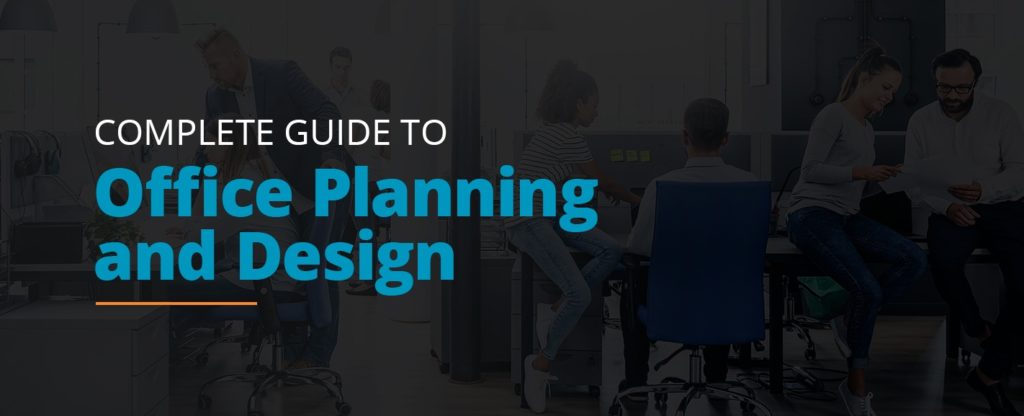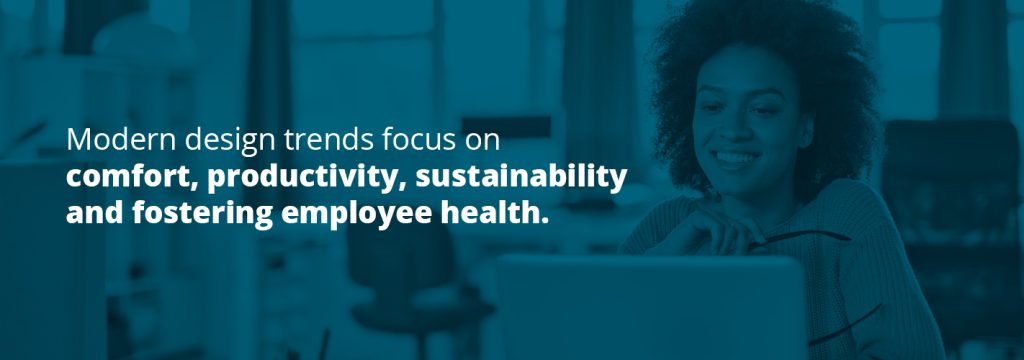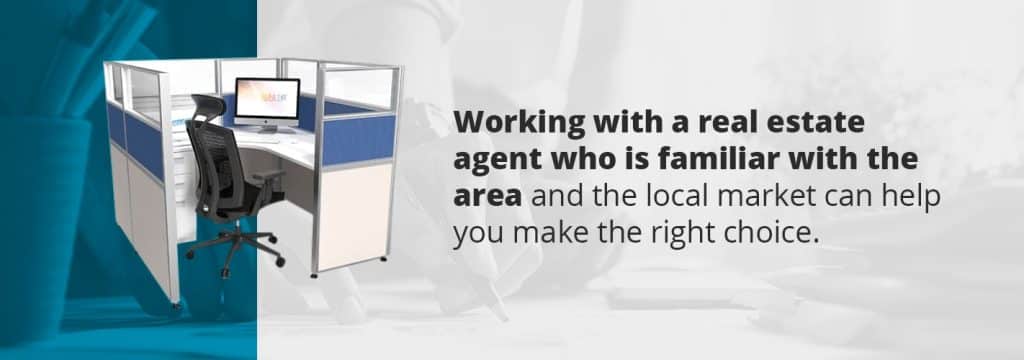Table of Contents
- Office Design Guide
- Chapter 2: What Are the Common Types of Office layouts?
- Chapter 3: How to Choose an Effective Office Layout for Your Company
- Chapter 4: Office Design Ideas and Considerations
- Chapter 5: How to Choose the Right Office Furniture
- Chapter 6: How to Install and Assemble Office Furniture
Complete Guide To Office Planning And Design

If you own or manage a business, you likely spend a lot of time in the office. You might even feel like you spend more time at work than you do at home. According to Harvard Business Review, CEOs work an average of 62 hours a week, and about half of that time is spent at the company’s headquarters. Whether or not you’re the CEO of your company, the way your office looks and feels can impact your productivity and overall job satisfaction. Offices are no longer the cold, uninviting spaces they were in the past. A modern office should be designed to improve the health and well-being of everyone who uses the space. With the right layout, design elements and furniture, you and your employees can feel more inspired and motivated to help your business grow. To revamp an old office or design a workspace in a completely different building, you need a plan. We’ll help you start the process with this handy guide. In this guide, we cover topics such as:
- How to choose the right office space
- How to design an office that promotes productivity
- How to select an office layout
- How to choose and assemble office furniture
From the planning to installation, we’ll take you through each step to help you create an office that works for you. If you run into any questions along the way, give us a shout at Sunline Office. We’ll be happy to help.
Chapter 1: How To Choose Your Office Space
It might be hard to imagine going to your office in a horse-drawn carriage. For some office managers in the old days, this may have been part of the routine. Working in an office building can be traced back to the 18th century with the East India Company in London. Back then, office workers complained of feeling like prisoners, and some even threw themselves from the windows.
Things were not much better for office workers during the early 1900s, when buildings housed “bullpen” layouts. To create a bullpen layout, companies typically arranged desks in rows and did not use any partitions to separate them. Workers lacked privacy and proper lighting, and these offices were usually noisy places. Companies also did not bother giving workers ergonomic desk chairs. As you might imagine, offices used to be uncomfortable places to work.
Fortunately, things started to change in the late 1950s when German office designers promoted an “office landscape.” Office landscapes were spacious, flexible and equipped with high-quality furniture. The goal was to create work environments that were more tailored to individual needs and reflected a democratic management style. This design philosophy made its way to the United States during the 1960s.
Today, business owners take a worker-centric approach to office design. Companies recognize their employees as their most valuable resource and view the workspace as a tool to help them reach goals. As a result, modern design trends focus on comfort, productivity, sustainability and fostering employee health. Comfortable employees make productive employees.

The first step to creating a welcoming, thriving office environment is to choose a building that works. In this chapter, we’ll show you how to pick the right office space. If you already have your office space but need a new layout, check out our products at Sunline Office.
Things To Consider When Choosing An Office Space
When it comes to choosing an office space, you want to consider your needs and goals carefully. How your office building looks and feels will impact your employees and make an impression on your clients. It will also be a major operating expense. Office rent varies widely based on square footage, building class, amenities and, of course, location.
So, what is your office space criteria? Knowing what you need will help you narrow your options. Here are the factors you’ll want to consider:
- Location: You need to think about location and proximity to customers and vendors. Ideally, you’ll want to choose a location that’s safe and convenient for clients to reach. Also, think about surrounding businesses and if they fit in with your company. For example, consider nearby amenities and how they might impact visitors’ experiences. Maybe there’s a cafe nearby, for instance, that’ll make it easy for you and a client to talk business over lunch.
- Security: Think about whether you’ll be able to run your business and store supplies securely in the location. Consider crime levels in the area and whether security measures exist, such as fences, cameras, alarm systems or security staff. Think about entry points into the building and what they require for access. Too many public entry points increase the vulnerability of a building.
- Noise: Consider the noise level surrounding the building and how it might impact your business and your employees. Too much environmental noise can lead to poor concentration, increased stress and decreased productivity. Therefore, you’ll want to reconsider choosing the office building located next to a sports stadium, even if it has a beautiful green courtyard.
- Rent: Rent is influenced by location. Renting in the heart of a large city or upscale neighborhood is generally going to cost more than renting in the suburbs or a less desirable area. However, that doesn’t mean you should base your decision on rental costs alone. You need to consider the spending power of your customers and who you want to attract.
- Utilities: Research the service providers of the area you’re interested in, so you know who will be providing the utilities and internet for your building. Consider factors like internet reliability, cost and the quality of service provided. While you might not think of utilities as a deciding factor, it could help you choose between your top options.
- Space: Consider the space you need for the number of employees you have. It’s essential to have enough space to make employees feel comfortable as they work. In general, you’ll want at least 70 square feet of personal space per employee. This number might be a lot higher, depending on your employees and the type of work they perform. For example, if your workers require large desks or extra storage space, you’ll want to keep that in mind. Ensure you’ll have enough space for future employees as well, and don’t forget to save room for meetings, breaks and visitors.
- Desired layout: Though you don’t need to know whether you want an open or closed layout just yet, it helps to have an idea before you go office shopping. Consider whether an office space will support your desired layout or would require you to remodel the area. Envision your ideal office as you shop around.
- Accessibility: Consider whether the office building is easy to reach by car or public transportation. If employees will have to commute too far or find new ways to get to work, you’ll probably want to reconsider. Also, ensure there’s adequate parking. That’ll save employees and visitors from a lot of headaches.
- Windows: Consider choosing an office that offers plenty of natural light, but also keep in mind you’ll need a way to filter incoming light. If there are no windows, think about how you’ll bring energizing light to the space by using artificial lighting. Proper lighting is necessary for preventing eye strain and is an essential part of ergonomics.
- Building quality: How does the building look? Is it visually pleasing and in great condition? Will it reflect your brand well? Would you be proud to share photos of the office with potential clients? These are all questions you’ll want to ask yourself as you explore the possibilities.
- Facilities: What facilities are offered in the building? Are there daycare services, an outdoor space or fitness center? Think about the amenities your employees want and need. You’ll increase their job satisfaction as a result.
- Workforce resources: If you plan to hire new employees, think about the region and the workers available. Consider the local education and if you’ll have access to a talented pool of candidates.
- Nearby housing: Are there affordable housing options near the potential office space? If employees can live comfortably near the office, you’ll be saving them exhausting commutes, and they’ll be more likely to stick around.
- Taxes: Research the local and state taxes and think about how it impacts your business.
- Local zoning ordinances: Check the area’s zoning laws and make sure you can legally operate your business in the location.
- Your overall impression: Think about how the building makes you feel and envision it fitting your brand. If it feels right and seems like a good investment, it may be time to make a decision.
Should You Rent Or Buy An Office Space?
Maybe you’ve found the perfect office space that has everything you need. But, perhaps this office paradise is for sale, not for rent. Should you take the leap and become an office owner rather than a renter? Owning an office is much different than renting one. Here are the pros and cons of each.
The Pros And Cons Of Buying An Office
The pros of buying include:
- You can build equity.
- You’ll face fewer restrictions on remodeling and decorating.
- You can rent out extra office space.
- You may pay less for the space over the long haul.
- You won’t have to worry about escalating rent amounts.
Cons include:
- It typically costs more upfront.
- You’ll need to maintain the property.
- You’ll have to pay property taxes.
The Pros And Cons Of Renting An Office
The pros of renting include:
- You’ll have greater flexibility if you plan to change locations in the future.
- You’ll face minimum property maintenance.
- You may be able to rent in a good location.
- You can typically expect lower upfront costs.
The cons include:
- Your rent may increase over time.
- You may have to deal with a landlord.
- You’ll have less control over how the office looks.

If you feel stuck, working with a real estate agent who is familiar with the area and the local market can help you make the right choice.
